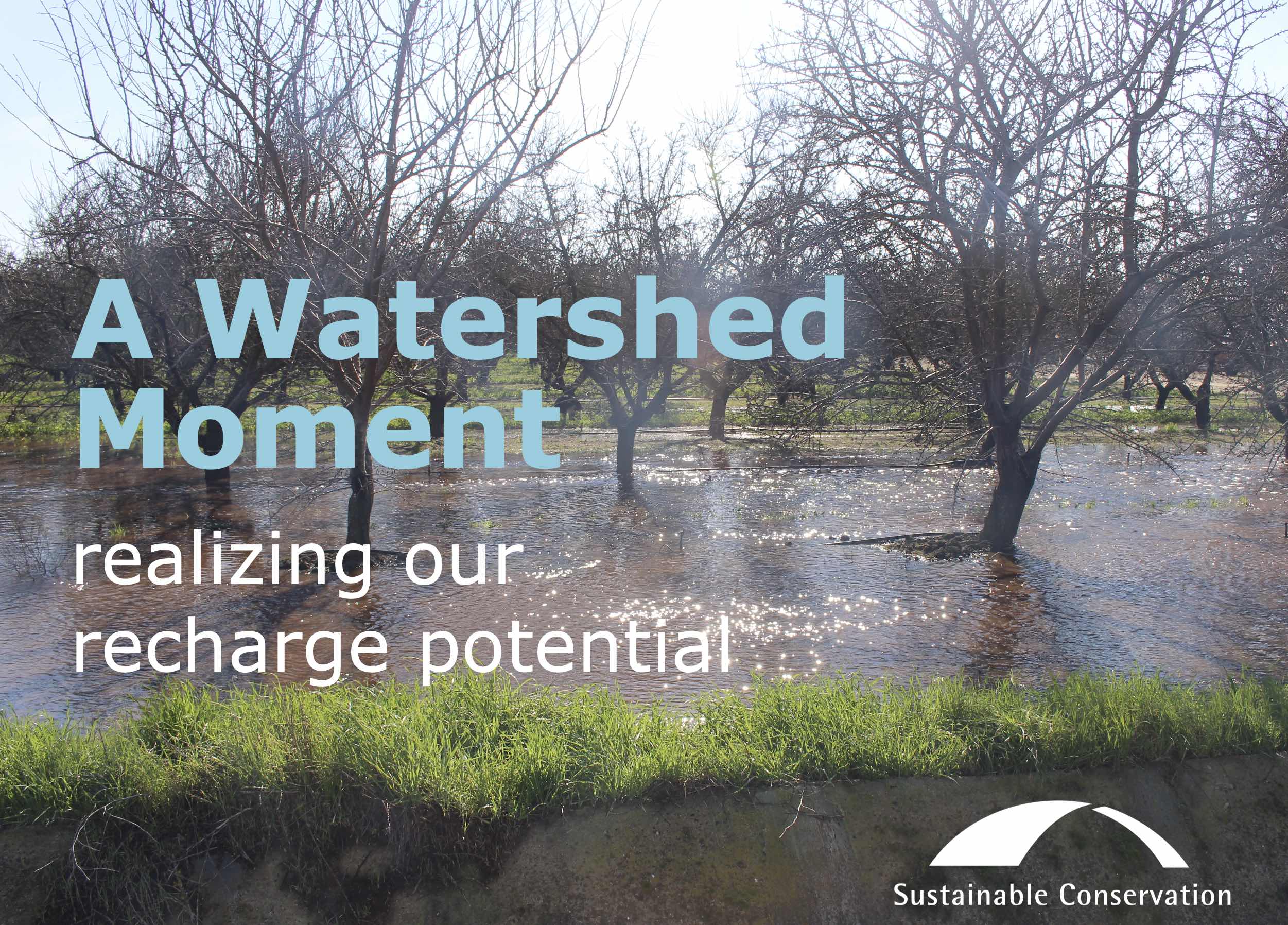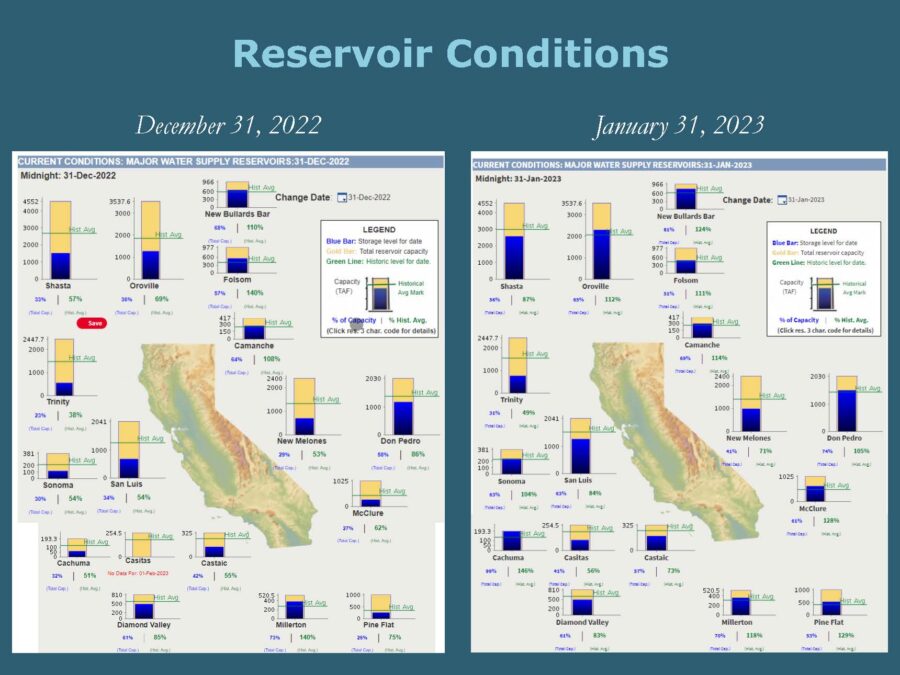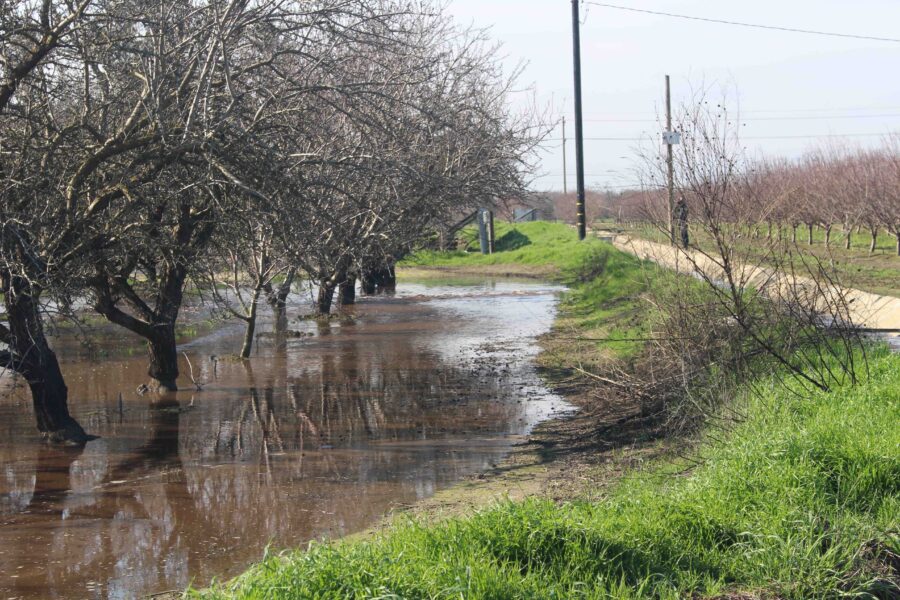
Missed our 2023 kick-off webinar? We’ve got you covered with a full recording and Twitter recap of the event.
We sat down with CEO Ashley Boren and Director of Resource Stewardship Dr. Daniel Mountjoy to learn what all the winter deluge really means for our water reality in 2023, and beyond.
Why Is California Water So Complicated?
Boren set the context with some key California-specific facts. With the most volatile precipitation patterns in the nation, and with decades-old infrastructure designed to move water north to south for farming and cities, and inland to the sea to avoid flood damage, we need a 21st-century update as our climate swings become more dramatic. When atmospheric rivers approach, we have to be ready.
Fortunately, there are things we can do to slow down and spread out our rivers, protect communities, and make sure our farms, wildlife, and people have the water they need to thrive. Citing efforts like the Yolo Bypass, River Partners’ Dos Rios Project, and many other State agency and on-the-ground innovator efforts, Boren reminded us that California water is never as simple as addressing a single silo or strategy.
We can transform floods from a hazard into a resource. We’ve made progress, but there’s a lot of work to do to integrate how we manage floods and droughts.

Localized rainfall means even at the end of our most recent slate of storms, some reservoirs sat just above their historic average while others received almost no water at all! Water availability varies dramatically across California, so our perception that water’s freely available just because it’s raining needs to change.
What Can We Do?
Sustainable Conservation’s decade-plus experience with a plethora of state partners testing, siting, and scaling groundwater recharge means many farmers and water agencies were ready to take water during these recent storms. Mountjoy walked through several examples of our work with individual farmers and fields, the recharge programs we’ve helped build in regions like Madera and Tulare, our and Earth Genome’s Groundwater Recharge Assessment Tool, and our current Flood-MAR watershed expansions with the California Department of Water Resources and the extended Flood-MAR network.
We can continue and scale this work to make sure the next time water comes (and it will), even more farmers, irrigation districts, floodplains, and basins will be ready to recharge our thirsty aquifers – which have at least three times the storage capacity as our above-ground reservoirs.

Groundwater recharge can happen on all kinds of crops, through all different kinds of water infrastructure. Contact us to learn how it’s possible!
Why Isn’t More Recharge Happening Now?
On-farm recharge’s potential is enormous, and that potential comes with some real challenges.
Irrigation districts and water managers can’t just flip a switch or open a canal – winter maintenance, staffing, and local conveyance constraints continue.
And, state-wide, more policy and permitting clarifications will help people understand when, where, and how much water we can divert in these peak flood times.
Bonus: ecosystem and human needs can absolutely be balanced even in these extraordinary situations, and local groundwater basins can also benefit.
Did We Miss Our Chance?
The opportunity’s not over just because it’s stopped raining. Water’s released from reservoirs to anticipate upstream snowmelt and possible deluges – if temperatures warm, snowmelt will accelerate, and those releases mean groundwater recharge potential throughout 2023. More incentives, more on-the-ground education and implementation, and more localized solutions can help all Californians prepare for droughts and deluges in tandem and adapt to our changing climate.
We can use this year to recognize the recharge potential demonstrated by farmers and districts who were ready, and help even more people be ready in the future.
How Can I Help?
We can help you plan for recharge on your land, explore the potential in your districts, and get you connected with your peers and colleagues.
Interested growers:
Contact Rogell Rogers at rrogers@suscon.org
Interested irrigation districts:
Contact Joe Choperena at jchoperena@suscon.org
To join the Flood-MAR Network:
Contact Jenny Marr at Jennifer.Marr@water.ca.gov
And, if you can help support our work, we would love to talk to you. We can’t do this work without you. This is our watershed moment, and you can be part of it.
To support our efforts and learn more:
Contact Michael Behrens at mbehrens@suscon.org
